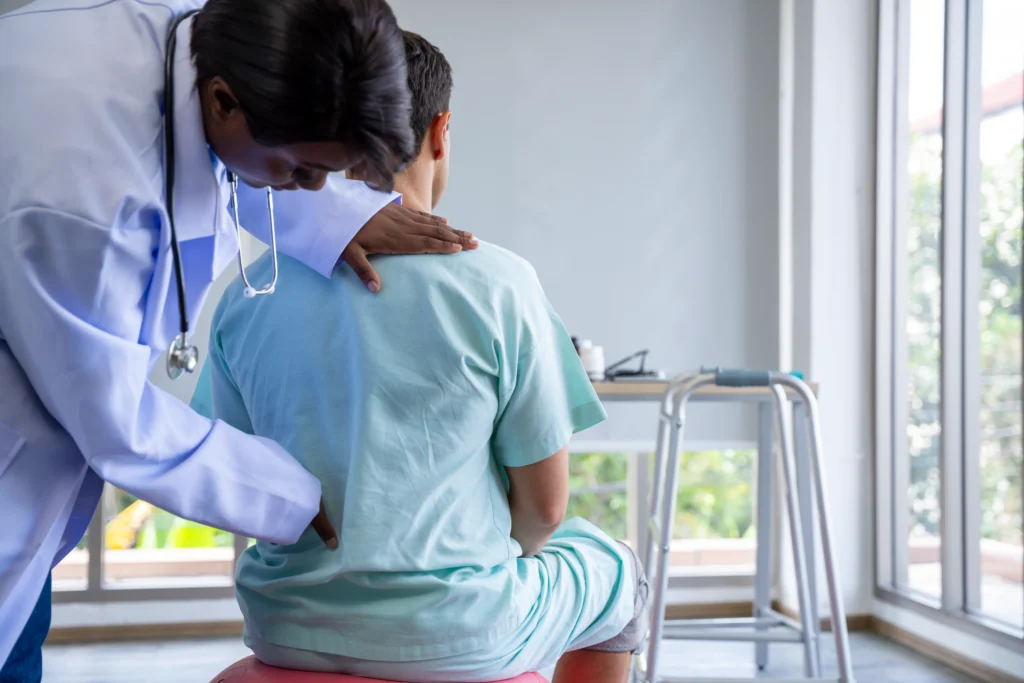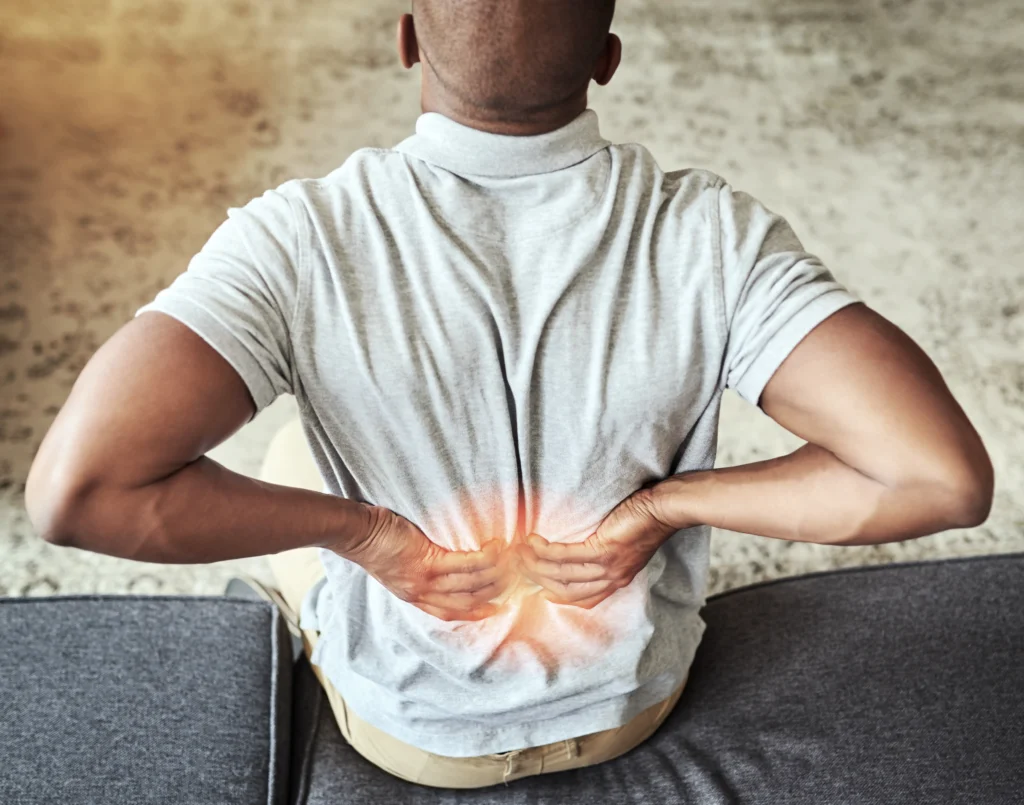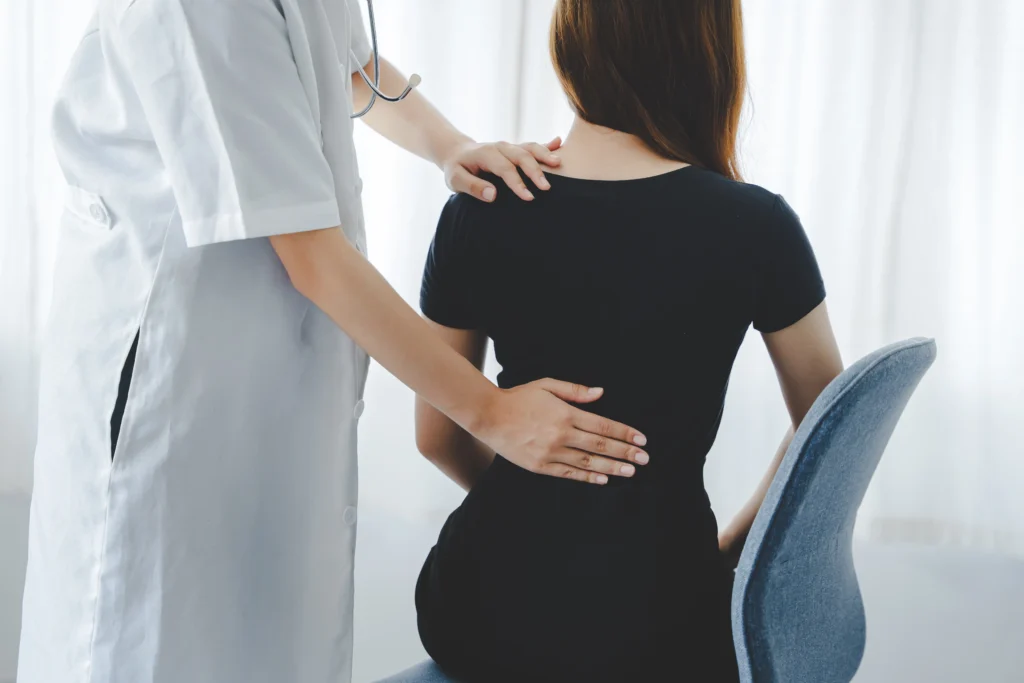
Table of Contents
Toggle“Back pain vs kidney stone” refers to the challenge of identifying whether pain in the back originates from the spine, muscles, or nerves, or is caused by an underlying kidney condition such as stones or infection. At Long Island Neuroscience Specialists, with over 25 years of experience in spine surgery and pain management, we’ve seen many patients struggle to distinguish between these two causes of pain.
Both can feel similar, but understanding the subtle differences can help you take the right steps toward recovery.

One of the most common questions I hear is, “How can I tell if this is back pain or something more serious like a kidney stone?” The answer lies in the details.
Back pain typically occurs in the lower part of the spine and is often linked to muscle strain, poor posture, or nerve compression. Kidney pain, on the other hand, usually appears higher up, closer to the ribs, and might radiate toward the abdomen or groin.
Kidney pain tends to be sharper or more intense when caused by stones, while back pain can feel dull, throbbing, or even burning, especially if it’s related to nerve issues. For instance, a herniated disc might send pain shooting down your legs, while kidney pain rarely affects the legs.
Another critical difference is that kidney pain doesn’t usually improve with movement or rest, unlike back pain, which may ease with stretching or changing positions. Accompanying symptoms like nausea, fever, or changes in urination often point to kidney issues rather than spinal problems.
Kidney stones have a distinct symptom profile that sets them apart. If you’ve ever experienced a kidney stone—or heard someone describe it—you know it’s often compared to the pain of childbirth. This pain is severe, comes in waves, and can move as the stone travels through the urinary tract.
Additionally, kidney stones may cause visible signs such as blood in the urine, cloudy or foul-smelling urine, or even small stones in the toilet. It’s not uncommon for patients to experience nausea and vomiting as their body reacts to the intense pain.
In contrast, back pain typically doesn’t affect your urinary system. Instead, you might feel stiffness, muscle spasms, or tenderness in a localized area of the back.
If the pain is nerve-related, such as from sciatica, it could radiate down the buttocks and legs, but it won’t cause systemic symptoms like fever or chills. Being able to identify these unique symptoms is critical, as kidney stones often require immediate medical attention, while many cases of back pain can be managed at home.
The causes of back pain and kidney stones are as distinct as their symptoms. Kidney stones form when minerals like calcium and oxalate crystallize in your urine.
Dehydration, high-sodium diets, and genetics can increase your risk. Polycystic kidney disease or repeated urinary tract infections may also lead to kidney pain.
Back pain is more often caused by mechanical issues. Heavy lifting, poor posture, or a sedentary lifestyle can strain muscles and ligaments.
Degenerative conditions like osteoarthritis or herniated discs also contribute to chronic back pain. In my practice, I’ve found that lifestyle habits often play a bigger role in back pain, while kidney issues are more likely linked to hydration and diet.

When patients come in with unexplained pain, we rely on several diagnostic tools to identify the root cause. For kidney pain, a urinalysis can detect blood, proteins, or infection.
Imaging tests like CT scans or ultrasounds provide a clear view of kidney stones or swelling. Blood tests might be ordered to check kidney function or rule out infection.
For back pain, the diagnostic approach often includes X-rays or MRIs to look for spinal abnormalities. Physical exams help determine whether the pain is muscular or nerve-related.
I always stress to patients that accurate diagnosis is crucial. Misdiagnosing kidney pain as back pain—or vice versa—can delay proper treatment and worsen outcomes.
The treatment pathways for kidney stones and back pain differ significantly. For kidney stones, the size and location of the stone dictate the course of action.
Smaller stones may pass naturally with increased hydration, while larger stones might require medical interventions like shock wave therapy or ureteroscopy. Infections are treated with antibiotics, and severe cases might need surgery to remove the stone or repair kidney damage.
Back pain treatment focuses on relieving symptoms and addressing the underlying cause. Over-the-counter pain relievers, physical therapy, and ergonomic adjustments are often enough for mild cases.
Chronic or severe back pain might require muscle relaxants, steroid injections, or even surgical interventions like spinal fusion. As a spine surgeon, I’ve seen incredible results with minimally invasive techniques that reduce recovery time and improve mobility. Read more here.
Preventing kidney stones starts with hydration. Drinking at least 8–10 glasses of water daily helps dilute urine and flush out potential crystal formations.
Reducing salt and protein in your diet and incorporating more fruits and vegetables can further lower your risk. If you’ve had kidney stones before, your doctor might recommend dietary changes or medications to prevent recurrence.
For back pain, prevention revolves around maintaining a strong core and healthy posture. Regular exercise, particularly activities that strengthen the back and abdominal muscles, can significantly reduce your risk.
Ergonomic furniture and proper lifting techniques are also essential. I always remind patients that small, consistent efforts in maintaining health can save them from significant pain down the road. Read more here.

Knowing when to seek medical attention is critical. If you experience severe pain that doesn’t improve with rest or over-the-counter treatments, it’s time to call a healthcare provider.
Symptoms like fever, chills, or blood in the urine should prompt immediate medical evaluation, as they may indicate kidney stones or infection. For back pain, red flags include numbness, weakness, or loss of bladder control, which could signal nerve compression or spinal cord issues.
Living with back pain or kidney stones can feel overwhelming, but understanding the root causes and managing symptoms effectively can significantly improve your quality of life. Chronic back pain often requires lifestyle adjustments, such as creating an ergonomic workspace or scheduling regular physical therapy sessions.
As a spine surgeon, I’ve worked with patients who found lasting relief through personalized treatment plans. Consistency is key—whether it’s sticking to a workout routine or following medical advice.
Kidney stones, on the other hand, demand vigilance in hydration and dietary habits. Patients who’ve experienced kidney stones often describe the pain as a wake-up call to make long-term health changes.
By staying hydrated and avoiding high-sodium or high-sugar diets, you can reduce your risk of recurrence. For those with recurring issues, medications or more advanced treatments may become part of daily life, but these interventions can be life-changing.
Accurate diagnosis isn’t just about getting the right treatment; it’s about preventing complications and unnecessary suffering. Mistaking kidney pain for back pain could delay critical interventions, such as antibiotics for an infection or surgery for kidney stones.
Similarly, attributing nerve pain to kidney problems might lead to unnecessary tests or treatments. In my practice at Long Island Neuroscience Specialists, we emphasize thorough evaluation.
We combine advanced imaging technologies with years of expertise to ensure our patients receive the right care for their condition. With over 25 years in the field, our approach focuses on precision and patient-centered care.
Whether you’re dealing with back pain or suspect a kidney stone, proactive care is essential. Pay attention to your body’s signals, and don’t ignore persistent or severe symptoms.
Early intervention can mean the difference between a quick recovery and prolonged discomfort. At Long Island Neuroscience Specialists, we’re here to guide you through every step, from diagnosis to recovery.
If you’re unsure about your symptoms or want to explore your treatment options, reach out to us today. Together, we can create a plan tailored to your needs.
GET IN TOUCH +
285 Sills Road
Building 5-6, Suite E
East Patchogue, NY 11772
(631) 475-5511
184 N. Belle Mead Road
East Setauket, NY 11733
(631) 675-6226
GET IN TOUCH +
285 Sills Road
Building 5-6, Suite E
East Patchogue, NY 11772
(631) 475-5511
184 N. Belle Mead Road
East Setauket, NY 11733
(631) 675-6226
SUBSCRIBE TO OUR NEWSLETTER +
Send us a Google review. Click this link and let us know how we did!
Review us on Yelp too.